Feeder Fishing – our guide to getting started
In our two part guide to feeder fishing, resident writer and angler Chris Smith takes you through the tackle, techniques and strategies of fishing the feeder that can reward you with net breaking results.
Feeder fishing has undergone a significant boom over the last few years. From being just another method in an angler’s arsenal there are now anglers who concentrate primarily on using the feeder. Hundreds of matches are organised each year that are ‘feeder only’ matches and there is a separate world championship dedicated to feeder fishing.
It will be astonishing to the younger anglers these days to learn that less than a lifetime ago you could have asked an angler a question regarding feeder fishing and there would have been a pause, a frown, and a shaking of the head. There was no such thing as feeder fishing, just a few anglers experimenting to see if they could catch the uncatchable.
So, how can it all change in one lifetime? How do we advance so far as to get a world championship dedicated to this type of angling, and how do we get feeder-only matches with prize money of tens of thousands of pounds up for grabs? If I had to use just one word to explain the primary cause for this change the word would be ‘carp’.
In this article I hope to explain the way that feeder fishing has changed and simplify some of the bewildering choices that a newcomer to feeder fishing might face.
Before the feeder existed, when dinosaurs walked the land.
There may be anglers older than me who can put me straight but I think I can say with some confidence that back in the early sixties (that’s the 1960s by the way) there weren’t any manufacturers making feeders. The feeders used at that time often started life as hair curlers that male anglers had purloined from their wives. With a little bit of modification they were mostly just packed with plain breadcrumbs and, being paired with a worm hookbait, were primarily used to target bream. Unknown to these intrepid trail blazers the ‘cage feeder’ had been born.
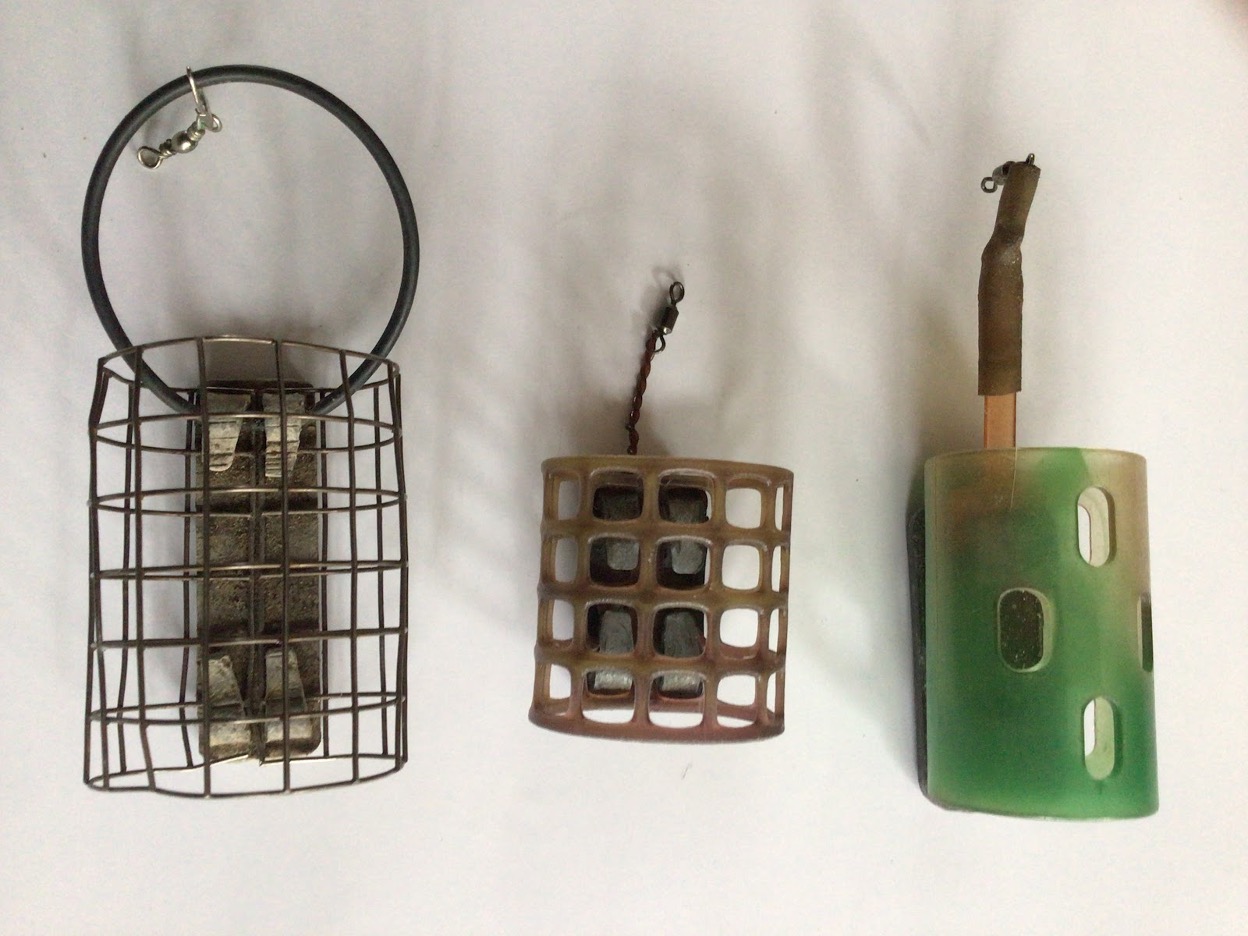
Three feeders primarily designed to hold groundbait. The wire cage on the left is the oldest design and resembles the earliest manufactured items. The middle version is a more modern plastic cage that does the same type of job. The final example is an open-ended feeder which also comes in versions without holes. All three designs can work equally well with micro-pellets. The open-ended feeder will release its contents more slowly than the cage, especially if it has no holes, potentially bringing an advantage on flowing water or deeper swims.
Home-made feeder fishing.
My dad was one of those many intrepid trail blazers and used to spend hours tying twisted heavy line feeder-booms and shaping roofing lead into weights for his hair curlers. Dad was also one of the anglers who were modifying the canisters that rolls of SLR camera film was supplied in, and making his own rudimentary maggot feeders. There may well have been a manufacturer making them somewhere, but my dad didn’t know about it and certainly didn’t buy them, because the whole idea of using a container stuffed with free offerings was still most certainly in its infancy.
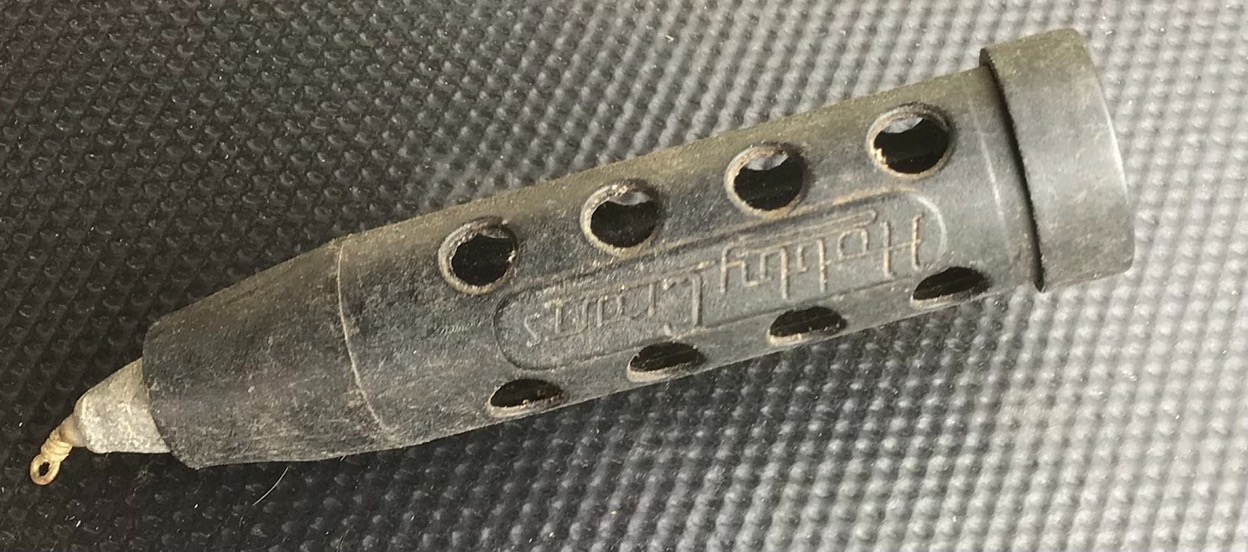
An early design of maggot feeder. I used this very feeder during the summer of 1986 and caught an exceptional number of tench and crucian carp from a local estate lake. It was a red letter day, burned into my memory. It is made by a company called ‘Hobby Craft’ and I wonder if they are still making them?
Sometime later, probably in the late 1960s or early 1970s, the tackle manufacturers caught on and alongside factory-made cage feeders, maggot feeders too (called ‘block-end’ feeders) were beginning to be produced, enabling anglers to have two options of feeder in their armoury, and all species of fish could be targeted, not just bream.
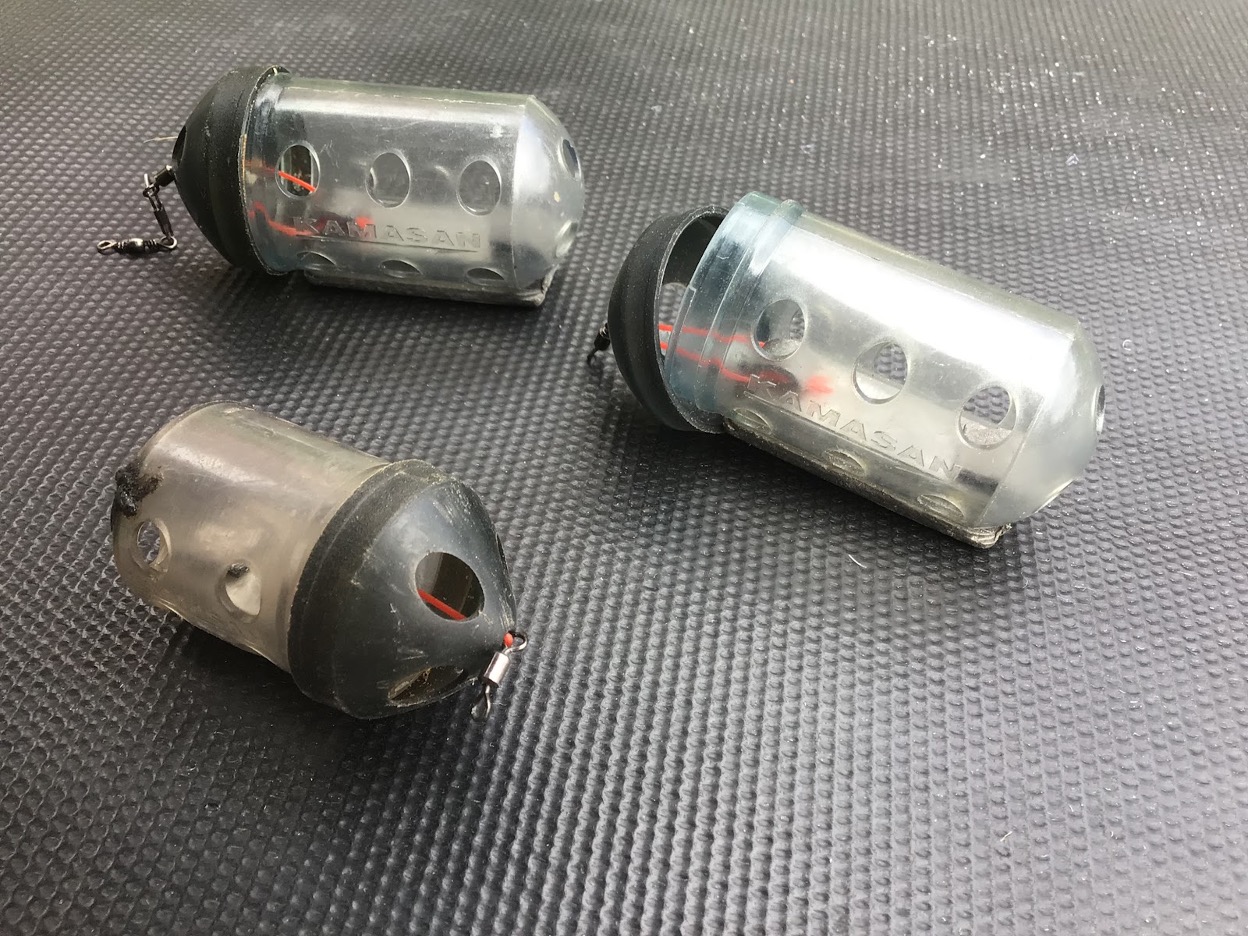
Typical block-end feeders. Designed primarily for maggots they can also be filled with squats, pinkies, casters and hemp. With the top removed you can pack particles and groundbait inside to great effect too. These examples are possibly 30 years old and still going strong.
Block-end feeders: a slow start.
For many years there was an understandably low level of development with odd manufacturers just making their own low volume version of the two basic themes of open-end and block-end feeders. Carp fishing hadn’t yet been invented and because rod technology wouldn’t permit fishing at very great distances nothing needed to change. Life was simple for an angler: open ended feeders caught bream and block-ends filled with maggots caught everything else.
Block-end feeders lagged behind for a long while simply because, unlike the incredible developments in fishing with new groundbaits and pellets, maggots still hadn’t fundamentally changed. In fact, even now, despite there being new block-end designs on the market, the traditional Kamasan Black Cap feeder, which was one of the very early designs of block-end, has become a classic and is still very popular today.
Whilst the greatest single development in feeder fishing was being driven by the creation of Method feeders, the variation and finesse of fishing the feeder in other scenarios was initially still relatively unchanged. These days, as a direct result of those multiple options in Method feeders, an accelerated rate of change has now been seen across the whole discipline. These days even block-end feeders have fully joined the angling arms race, with flighted options, window feeders and in-line options being made.
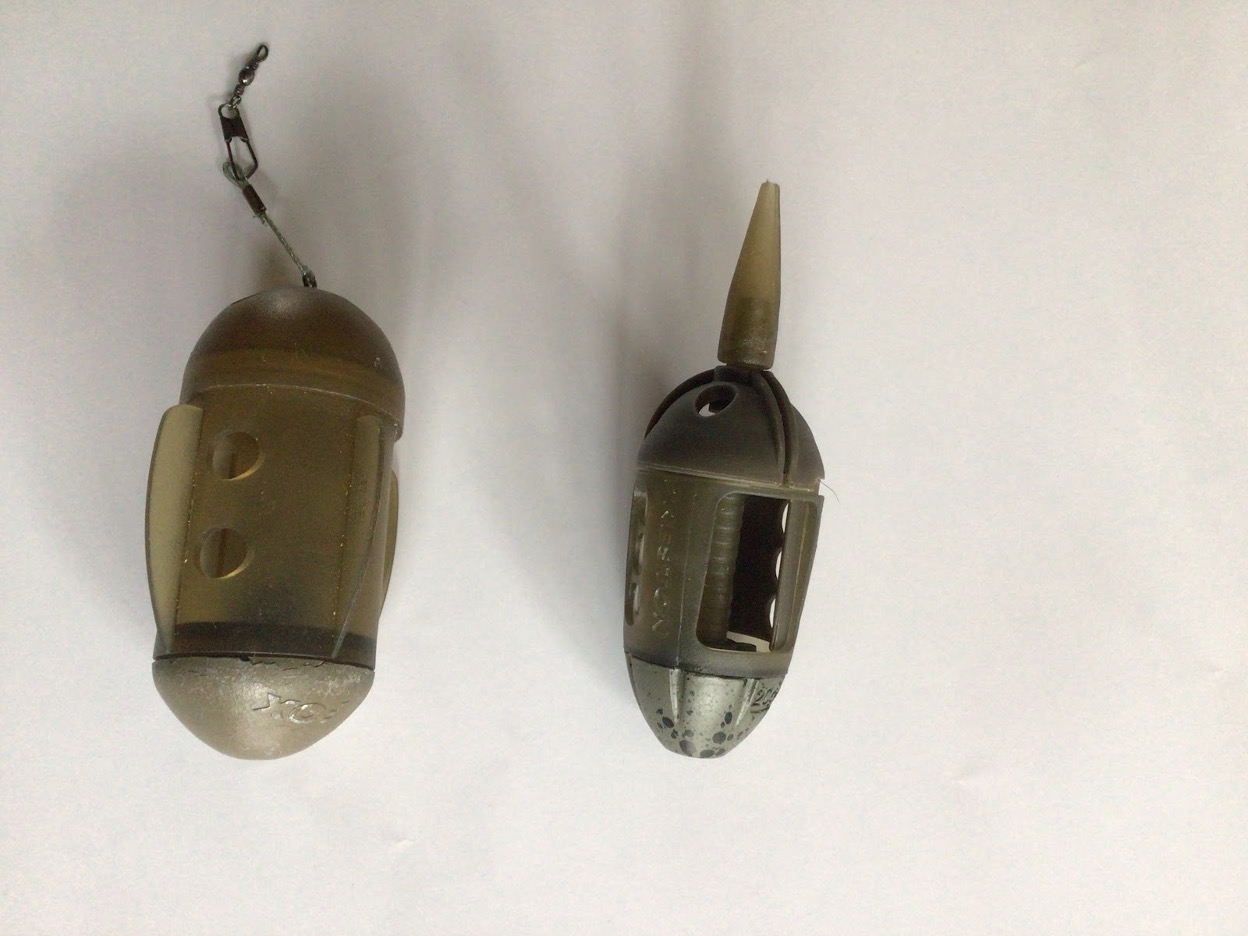
Eventually there was a spin-off from the development in groundbait and pellet feeders causing a parallel development of maggot feeders. These are two examples, one with flights and the other an in-line window feeder each with a similar weight – forward aerodynamic design. They both still deliver maggots and other particles but their casting distance and accuracy are improved in comparison to traditional block-ends.
Feeders: a confusion of choice.
Below is a list of many of the feeder options you may find on the shelf of your local tackle dealer. Even though I may have missed a few, the choice is still utterly bewildering and my mind is boggled by what the next ‘must have’ option might be.
Wire cage, plastic cage, open tube, perforated open tube, flat bed, quick release, pellet feeder, banjo, hybrid, shotgun, distance cage, carp feeder, Dutchmaster black bullet feeder, black-cap, blockend, flighted blockend, mesh, oval, window feeder, window cage, alloy open, alloy method, maggot feeder, bait-up feeder…… etc.
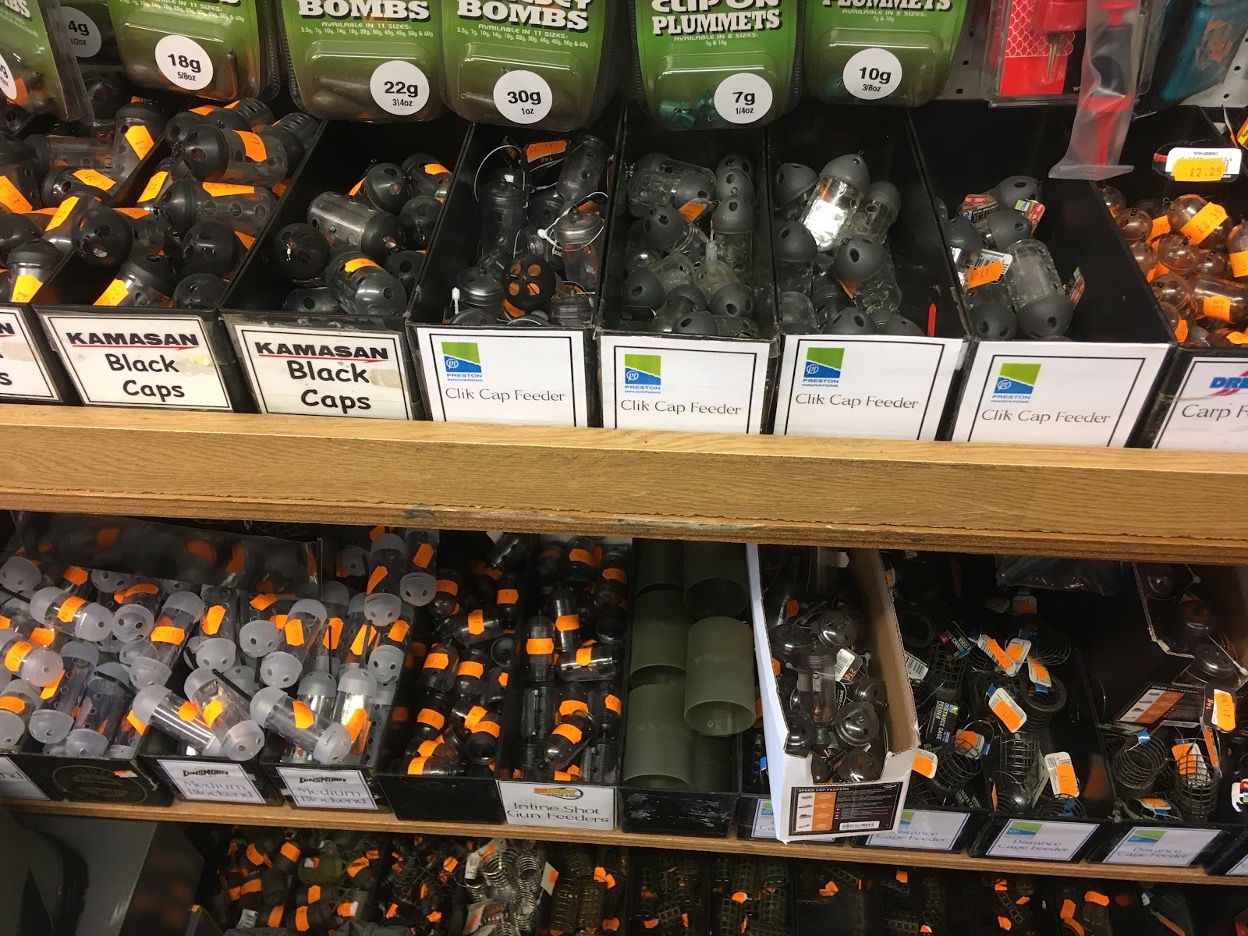
My local tackle shop has an enormous array of feeders on offer. This is just a small sample of the block-end feeders available. The Kamasan Black caps are still very much in evidence.
Elusive carp, the catalysts for change.
In the sixties anglers grew up believing the old wives’ tale that carp were uncatchable; so fantastically intelligent that they would suss out and utterly reject our inadequate and relatively pathetic efforts. Carp were usually the preserve of specialist anglers who spent years and years targeting the species. The ‘specialists’ were looked upon with awe and amazement and some became household names, like Dick Walker who caught a record specimen. They were a secretive and close knit group who could proudly boast to their fraternity when they had caught a ‘twenty’ or even a ‘thirty’ in a session. Carp fishing was definitely not one of the pastimes of the average angler.
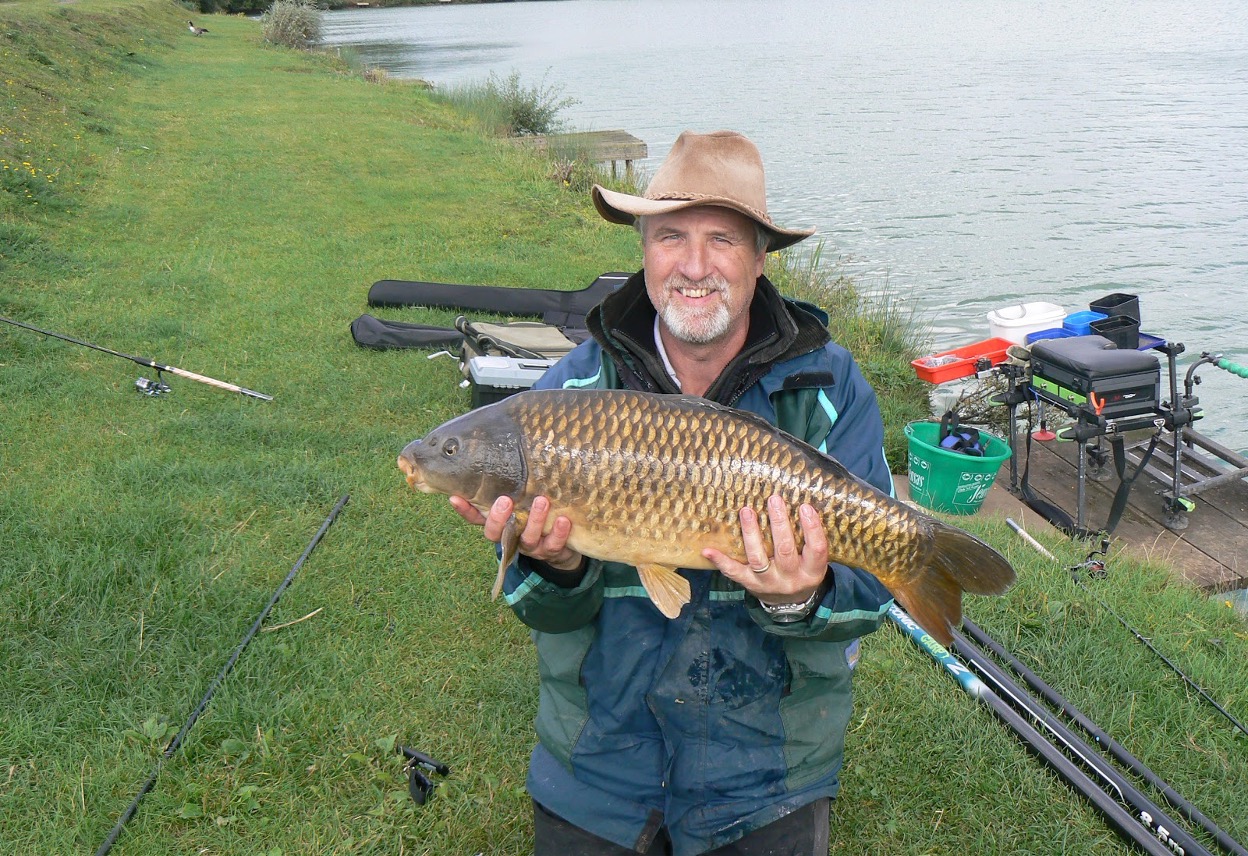
Match and ‘pleasure’ anglers thought that double figure carp were rare and almost uncatchable 40 years ago. This 16lb specimen was one of a dozen similar sized fish that I recently caught in one session, … on a small method feeder right at my feet.
All change.
Mallory Park: the place where feeder fishing began.
Although not initially recognised as a commercial fishery, the lake in the middle of Mallory Park motor racing circuit was most certainly a forerunner to the concept. In the early nineties a new method was developed at Mallory that proved to be unbeatable, specifically for catching the elusive carp. Mallory Park was used for match fishing and had also been stocked with carp. Initially the small carp that had been stocked were occasionally being caught despite the old wives’ tale. Even as these carp grew, quite unexpectedly they were still frequently being caught in matches.
This wasn’t supposed to happen because carp, especially wily older carp, were uncatchable! Consequently there was a dawning realisation that there was actually no great mystique and another myth was dispelled. These fish were as catchable as anything else in the water. It was ‘game on’ as contests on Mallory Park were soon being won with carp and it became even more important to target them. Eventually Mallory hosted the first ever Fish O Mania contest in 1994 and match fishing got serious with big money at stake. Boom!
In the beginning there was Dave Hough.
The story goes that an angler called Dave Hough, a regular in the matches at Mallory Park, overfilled a simple cage feeder, squeezing a great ball of additional groundbait around the cage. Very cleverly he buried his hookbait in the outer layers and then cast this giant ball of feed out amongst the rapidly growing voracious carp. He simply destroyed the opposition, winning everything for a long period of time. The Method was born.
Note *** There are alternative stories about people in South Africa making up balls of maize wrapped into wire cages and casting them out because it was forbidden to throw the balls in by hand, but none of that matters. Here in the UK this was the first time in match fishing circles this was ever done, and with its notable success the birth of the Method (as it was dubbed) was undoubtedly Mallory Park.
The Emstat feeder: the start of something big.
The principle of the Method, ie. wrapping a ball of groundbait around a frame, spawned a boom in all things ‘feeder.’ Shortly after its inception the Method was initially fine tuned with the creation of an early purpose-made design called the Emstat feeder.
The Emstat was a teardrop shaped wire frame, weighted at the bottom, and could hold so much feed that anglers often resorted to fishing with hefty carp rods to enable delivery of the bait without breaking their rods. Bite detection was a doddle, just hang on to your rod before it gets pulled in!
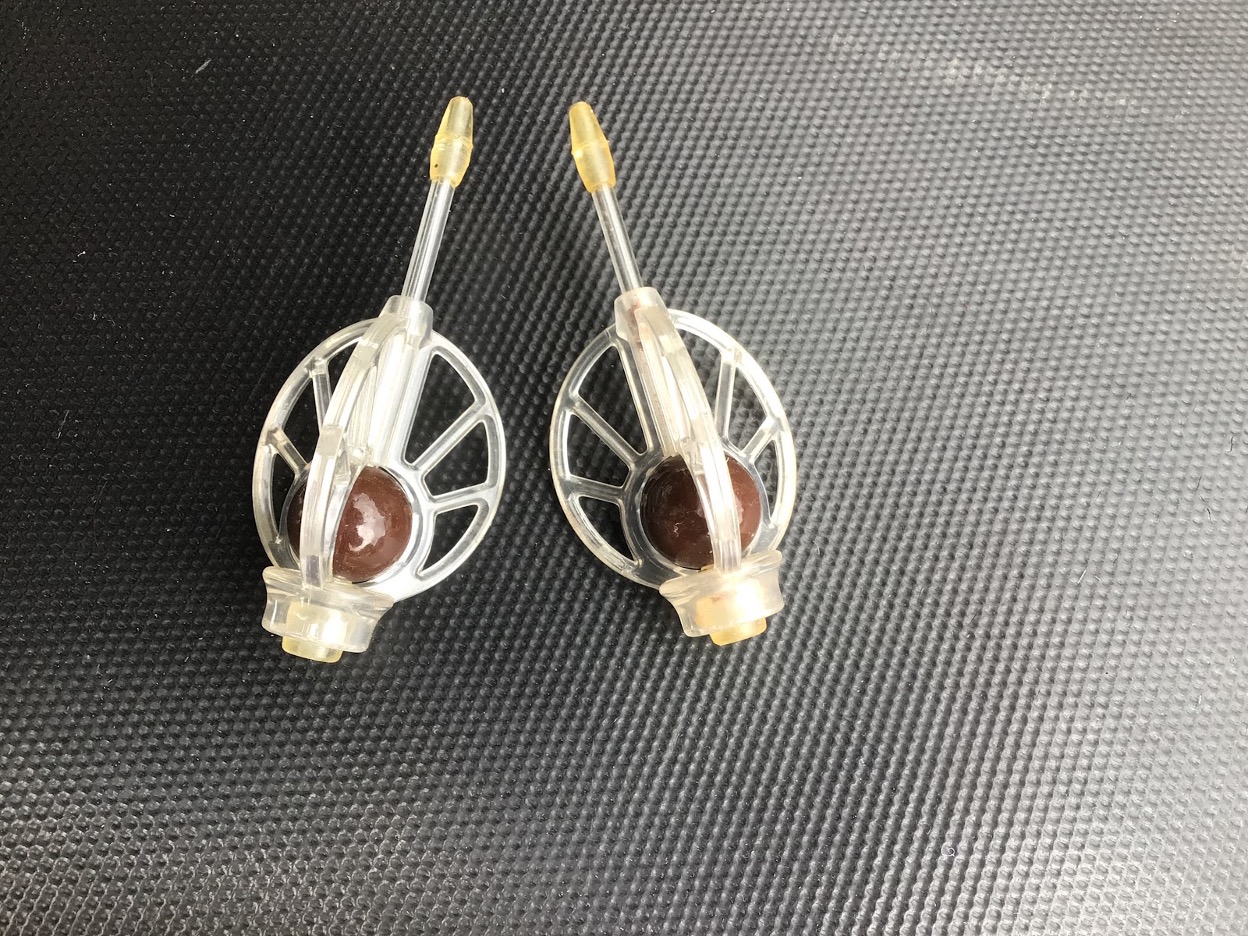
These feeders are made in plastic and are an evolution from the original Emstat frame feeder, dating back to the 1990s. The first Emstats were made from wire to a similar design as those in the photo, but were often twice as big. You could create a ball of bait as big as your fist and the only limitation was the strength of the rod you were casting with.
Roy Marlow takes the next step.
The Emstat feeder didn’t present the hookbait uppermost on the lake bed, it was entirely pot-luck as to how it settled, but the totally unwary carp took no notice of that. Wherever the hookbait lay they would steamroller the feeder into submission, and eventually take off with the bait.
Pretty soon everyone was using the Emstat and, in a world when everyone was doing the same thing, the drawbacks of fishing with it came to the fore. An improvement was needed. The angler with an ‘edge’ could pull away from the hoi-polloi. Roy Marlow, an England Team match angler and the driving force behind the matches held at Mallory, continued development of the Method feeder. One of the early modifications to the Emstat feeder was made by drilling a hole and threading an elastic shock absorber through for the hook length to attach to. This gave a better shock absorber to counter the stiff rods that had been used to get the bait out there in the first place.
Because of the feeding frenzies caused by so much bait all going in at once the foul-hooking of fish was always a problem. Similarly line bites were an issue and coupled with foul-hooking they resulted in reduced catch rates and too many lost fish, especially as the fish grew a little more savvy. The benefits of the Emstat feeder were becoming diminished. Enter Mr Findlay.
Andy Findlay and the Flat-bed Feeder.
The biggest credit for developing the Method further should probably go to Andy Findlay. In an effort to stay one step ahead of the crowd Andy recognised the drawbacks of the initial design and created the first ‘flat-bed’ feeder. Designed to ensure that the weight was at the bottom of the feeder upon landing, the design meant the angler could load the feeder in such a way as to always put the hookbait on top. Less bait on the feeder kept the frenzy to a minimum (the feeder only accepted enough bait to feed one carp at a time) and the lower profile kept the line lower in the water … ergo less line bites and less foul hooking.
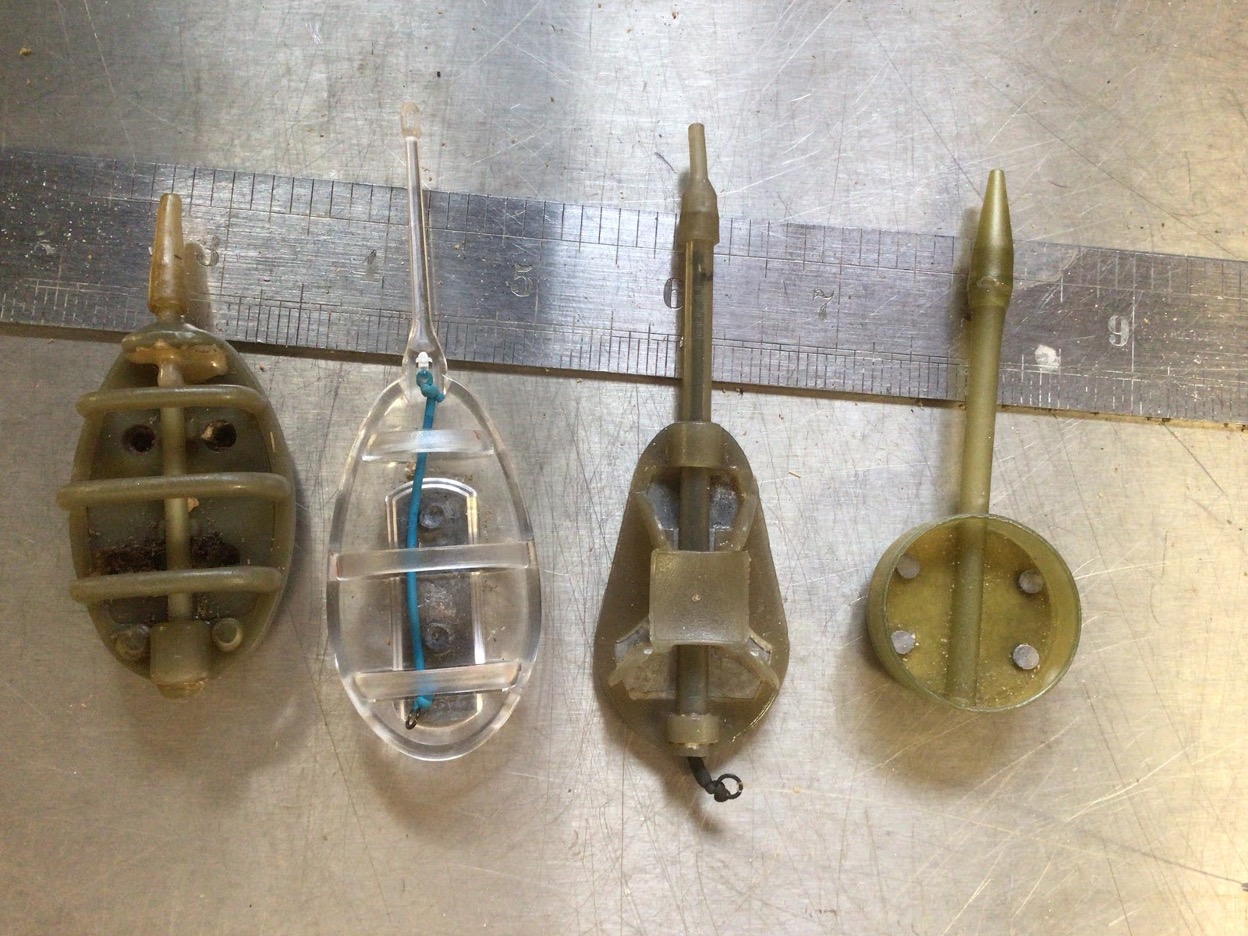
Various method feeder designs. Note the elastication of the middle two designs, an option that some fisheries now ban in favour of free running rigs. The design on the right is called a ‘banjo’ feeder because of its shape. Guess who designed that,…. yup, it was our old friend Mr Findlay again.
From home-made to factory made. Method feeders for the masses.
At first Andy made his own flat-beds by cutting ovals of roofing-lead and soldering on wires. For a period this remained his own secret and, when everyone else was still using the Emstat, Andy was quietly winning money with his homemade contraptions. Eventually, once the great advantages of flat-bed Method feeders were recognised and the proliferation of the new commercial fisheries created a marketplace, tackle manufacturers began to produce them en-masse. They not only proved to work on every one of the new commercial venues but happily they would also sort out almost any other species of fish found on natural venues too.
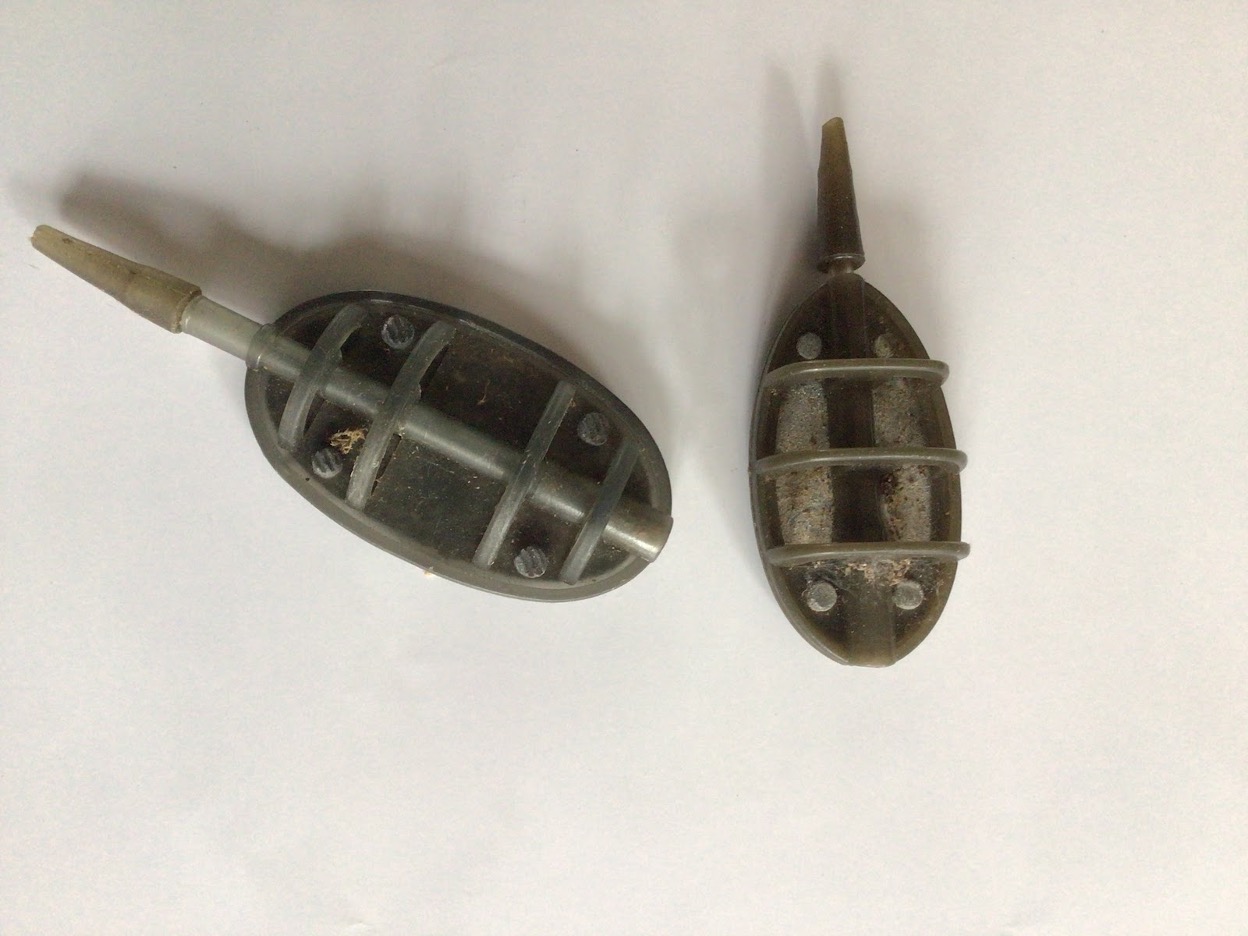
Two different types and size of flatbed feeders. The variation in size, with each size having additional options of different weight, gives the angler a choice of feeder that will suit the distance to be cast and the amount of feed that they want to introduce.
Sponsored by Preston Innovations, Andy Findlay has now been right at the forefront of change in end-tackle design for 30 years. Using his flair for innovation (pun intended) the same sophistication and development has leached across into all types of feeders. With so much technology applied the use of a feeder is no longer considered a ‘chuck it and chance it’ way of fishing, and the development of end tackle has been paralleled in feeder-rod design and also in reels that are made primarily for feeder fishing. There is a huge variety and nuance in every aspect of feeder fishing today and it is little wonder that some anglers have specialised with these tactics.

Two types of hybrid feeder. The term ‘hybrid’ refers to them being a combination of a flat-bed and a banjo feeder. These will work well with pellets or groundbait as well as a combination of the two.
Next time – Part Two of feeder fishing
In Part Two I’m going to explore the different types of ground-baits and feeder mixes and the type of rods and tackle you’re going to need if you want to take up feeder fishing. In the meantime, please do drop me any comments or feedback below – I’d love to hear from you.
Similar articles
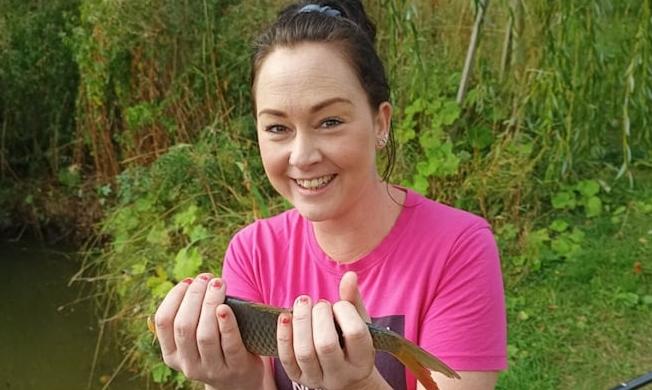
Angling Trust survey – the benefits of going fishing
In support of the current ‘Stress Awareness Month’, the Angling Trust is asking anglers to take a brief survey to highlight the benefits of going fishing. The survey closes on Sunday at midnight.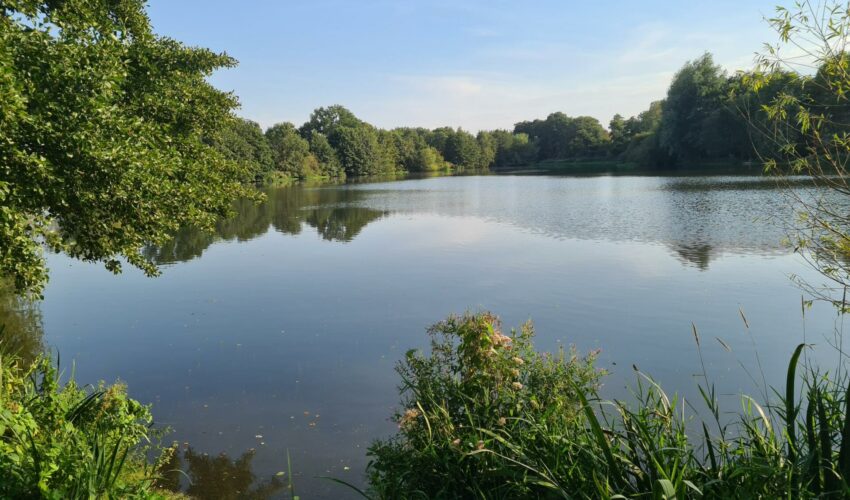
Our guide to fishing this spring (2024)
With the worst of the weather over (we hope!) and with spring finally here, it’s time to clean out that tackle box and get on the bank for some spring time fishing.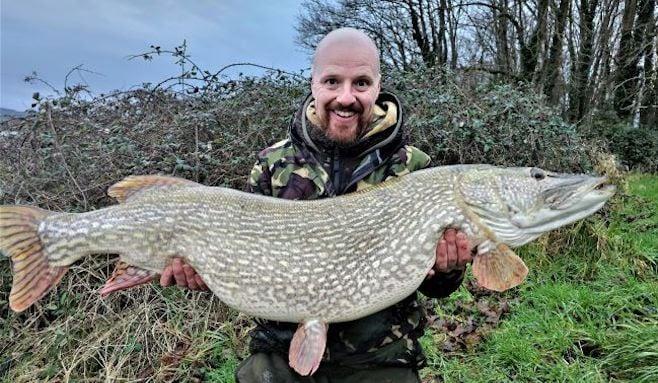
Chew Valley pike is new record
A 47lb 5oz pike taken by Chew Valley Lake angler Lloyd Watson on February 13 has been awarded the new record for a British rod caught pike.
Guide to buying second hand fishing tackle
This seasonal cold and wet weather can cause many of us to stay at home rather than go fishing, but the yearning within to do something fishy can often be satisfied by buying more kit.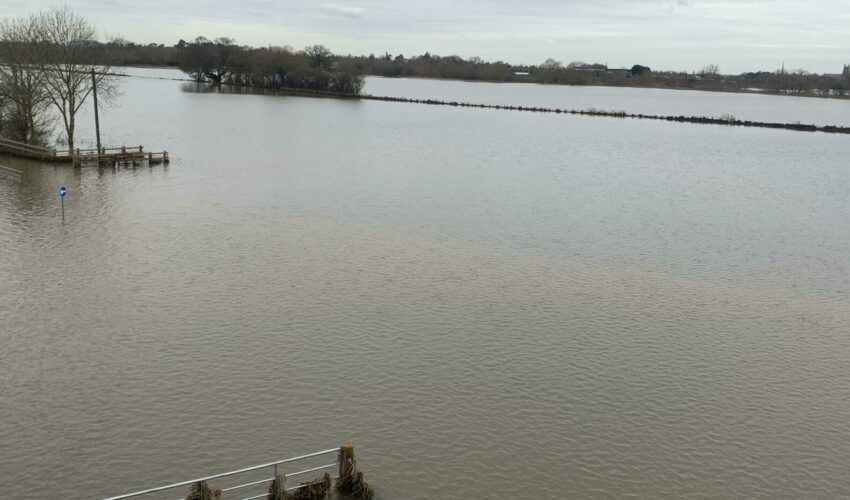
What happens to fish in severe floods?
The recent extreme floods will have led many anglers to wonder what lasting effects such dramatic events have on fish. Fishery Management Consultant Dr Bruno Broughton explains what goes on.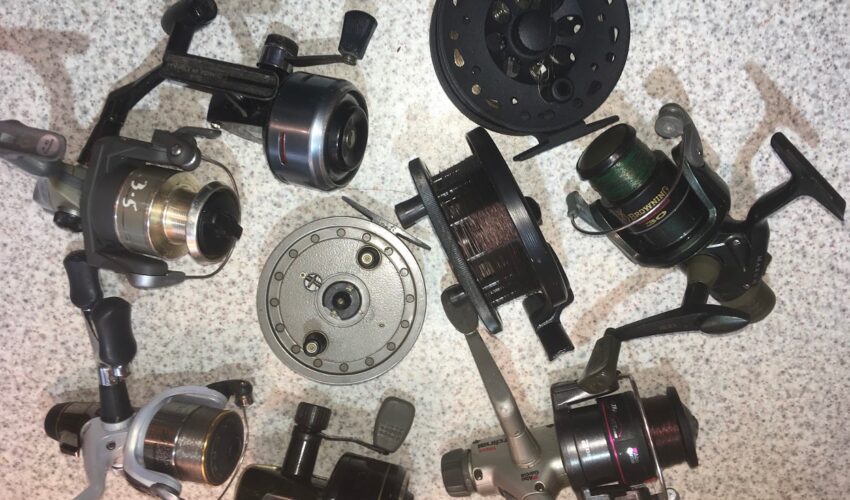
Coarse fishing reels explained
If you’re new to fishing or just thinking about purchasing a new fishing reel, Chris Smith delves into the detail about his coarse fishing reels and explains the benefits and features of the different types.Search by Region or County
Find new places to go fishing in your local area or county by choosing your destination below
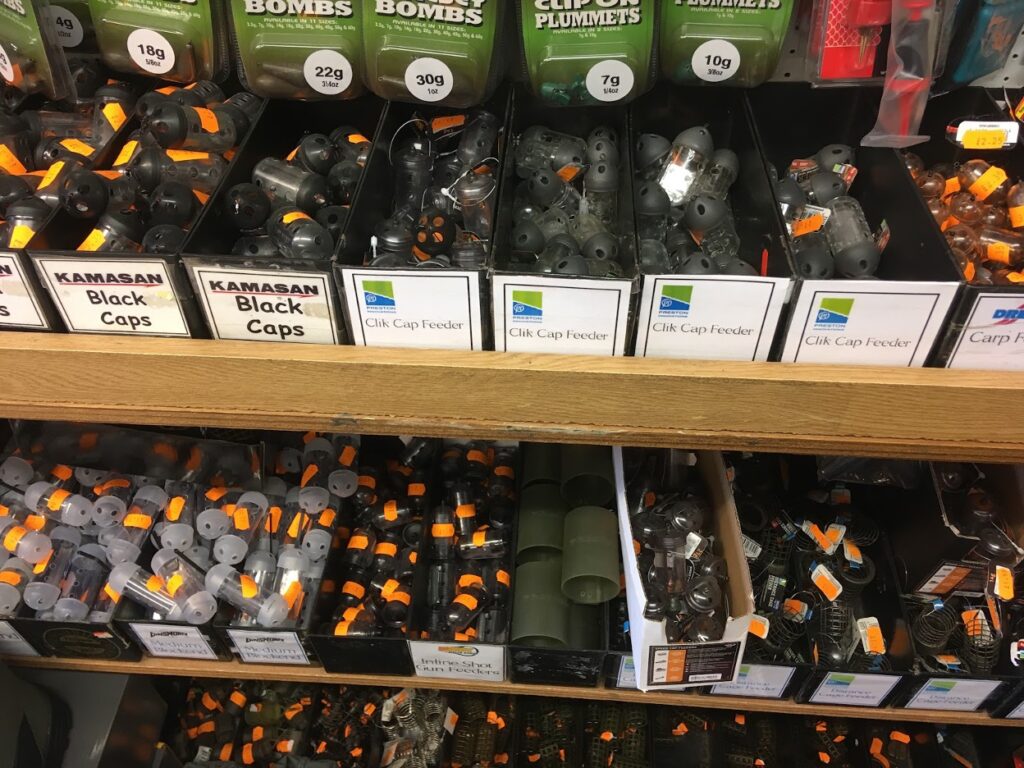








Comments